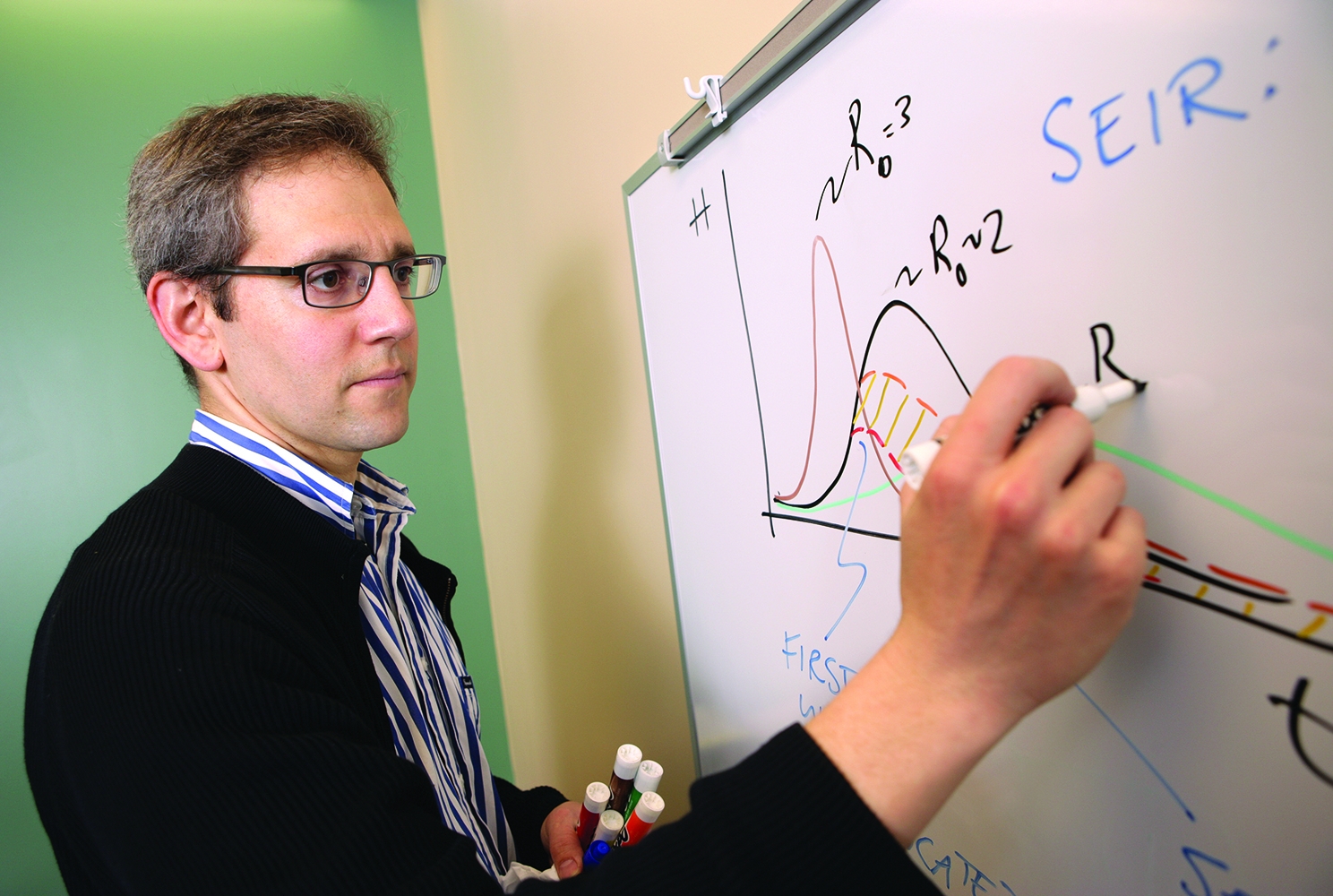Delays Could Overwhelm Hospitals, According to New Study by Weill Cornell Medical College Public Health Researchers
One of Two Studies by Weill Cornell's Nathaniel Hupert in the July/August Journal Medical Decision Making
NEW YORK (July 24, 2009) — A large attack on a major metropolitan area with airborne anthrax could affect more than a million people, necessitating their treatment with powerful antibiotics. A new study finds that in order for a response to be effective, quick detection and treatment are essential, and any delay beyond three days would overwhelm hospitals with critically ill people.
The results of a computer simulation study appear in the July/August edition of the journal Medical Decision Making — one of two studies by Dr. Nathaniel Hupert of Weill Cornell Medical College in the issue. The study can be found at http://mdm.sagepub.com/cgi/rapidpdf/0272989X09341389v1.
"No matter how well-organized and prolonged a treatment program is, it must be quickly implemented. In fact, our analysis shows that time-to-treatment is roughly twice as important as the duration of the distribution program," says lead author Dr. Nathaniel Hupert, associate professor of public health and medicine at Weill Cornell Medical College.
"Crucial to rapidly implementing a treatment program is early detection, including thorough use of advanced biosurveillance technologies and live, person-to-person communication," continues Dr. Hupert, who is also director of the new Preparedness Modeling Unit at the U.S. Centers for Disease Control and Prevention (CDC). "But most important of all are multilateral diplomatic efforts to prevent bioterrorist attacks from ever happening."
The study predicts that a campaign initiated two days after exposure would protect as many as 87 percent of exposed individuals from illness — a rate considered successful by the CDC. Each additional day needed to complete the campaign would result in an average of up to 2.9 percent more hospitalizations in the exposed population. And each extra day of delay to the start of the program beyond two days would result in up to 6.5 percent more hospitalizations.
Anthrax attack scenarios typically involve the release of one kilogram of weaponized anthrax from a small airplane flying over a major city. The invisible powder could be inhaled by thousands or hundreds of thousands, who would start becoming sick anywhere from 24 hours to a week or more after the attack. With appropriate and timely administration of an antibiotic treatment program, exposed individuals would be spared from developing inhalational anthrax infection.
Co-authors include Daniel Watson of Washington University School of Medicine in St. Louis, Mo.; Jason Cuomo of Operation USA, Culver City, Calif.; and Weill Cornell's Dr. Wei Xiong, and Eric Hollingsworth and Kristof Neukermans, formerly research data specialists in the Weill Cornell Department of Public Health, reporting to Dr. Hupert.
The study is funded by the U.S. Department of Health and Human Services, Agency for Healthcare Research and Quality, and the National Institutes of Health.
Guidelines for Computer Modeling of Disaster Response
Dr. Hupert is co-author the first-ever position paper of the Society for Medical Decision Making — also appearing in the July/August edition of the journal Medical Decision Making. The study tackles a challenge in the emerging field of disaster response planning — the confusing variety of approaches to computer modeling.
Computer modeling is increasingly used to predict and plan for disaster response. But because there are so many different modeling methods, researchers have been unable to compare results between models. Dr. Hupert and his co-authors looked at various approaches and recommend several best practices: models should address real-world problems, be designed for maximum usability, strike the appropriate balance between simplicity and complexity, include appropriate outcomes, and be designed to evaluate the many uncertainties inherent in disaster response. Finally, the authors stress that clear and complete reporting of model results is particularly critical for disaster response models.
The study's lead author is Dr. Margaret Brandeau of Stanford University. Additional co-authors include Jessica McCoy, Jon-Erik Holty and Dena Bravata of Stanford University.
Weill Cornell Medical College
Weill Cornell Medical College, Cornell University's medical school located in New York City, is committed to excellence in research, teaching, patient care and the advancement of the art and science of medicine, locally, nationally and globally. Weill Cornell, which is a principal academic affiliate of NewYork-Presbyterian Hospital, offers an innovative curriculum that integrates the teaching of basic and clinical sciences, problem-based learning, office-based preceptorships, and primary care and doctoring courses. Physicians and scientists of Weill Cornell Medical College are engaged in cutting-edge research in areas such as stem cells, genetics and gene therapy, geriatrics, neuroscience, structural biology, cardiovascular medicine, transplantation medicine, infectious disease, obesity, cancer, psychiatry and public health — and continue to delve ever deeper into the molecular basis of disease and social determinants of health in an effort to unlock the mysteries of the human body in health and sickness. In its commitment to global health and education, the Medical College has a strong presence in places such as Qatar, Tanzania, Haiti, Brazil, Austria and Turkey. Through the historic Weill Cornell Medical College in Qatar, Cornell University is the first in the U.S. to offer a M.D. degree overseas. Weill Cornell is the birthplace of many medical advances — including the development of the Pap test for cervical cancer, the synthesis of penicillin, the first successful embryo-biopsy pregnancy and birth in the U.S., the first clinical trial of gene therapy for Parkinson's disease, the first indication of bone marrow's critical role in tumor growth, and most recently, the world's first successful use of deep brain stimulation to treat a minimally conscious brain-injured patient. For more information, visit www.med.cornell.edu.
Andrew Klein
ank2017@med.cornell.edu

